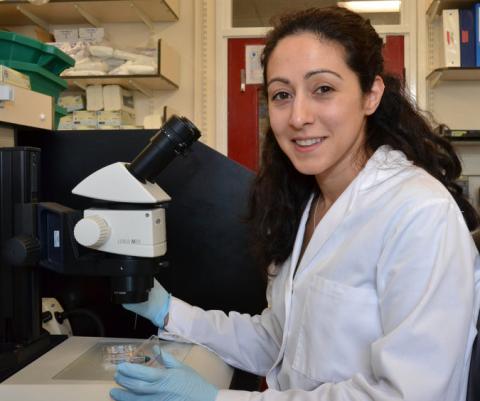British researcher gets permission to edit genes of human embryos
A British regulatory agency that oversees reproductive biology, the Human Fertilization and Embryology Authority, on Monday approved an application by Kathy Niakan, of the Francis Crick Institute in London, to alter human embryos with the Crispr technique. Dr. Niakan, a developmental biologist, has no intention of implanting the altered embryos in a womb. According to a report in Nature, she will let the embryos expire when they are seven days old and have reached the blastocyst, or implantation, stage. The usual source of such embryos is fertility clinics that have generated more than their clients need.
Dr. Niakan’s goal is to understand the cascade of genetic switches that are thrown as the fertilized egg progresses through its first few divisions. Her experiment will lead to no specific medical treatment, only to better knowledge of the basic biology of development. This may prove useful in treating certain cases of infertility, given that many fertilized eggs fail before they reach the blastocyst stage.
The cascade of switches, beginning with the activation of a gene known as Oct4, has been well worked out in mice, but researchers would like to know how similar the process is in humans. Practical treatments developed from this knowledge would not necessarily require Crispr.
British researchers have pioneered many advances in reproductive biology, including the first test-tube baby, embryonic stem cells (at least in mice, from which it was easy for others to adapt the technique to humans) and mitochondrial replacement therapy. They may now be able to seize the lead in exploring the early stages of human embryology. In the United States, Congress has forbidden the government to support research in which a human embryo is destroyed, although the ban does not apply to privately funded researchers.
In April 2015, in the first known use of Crispr on human embryos, researchers led by Junjiu Huang of Sun Yat-sen University in China tried to correct a defective gene that causes a blood disorder known as beta thalassemia. Though the experiment was ethically defensible — all the embryos were unviable because of a fatal defect — it also demonstrated the possible dangers of the technique because of the many things that went wrong. It was this experiment that gave urgency to the steps leading to the three academies’ call for a worldwide moratorium on modifying the human germ line.
David Baltimore, a leading biologist at the California Institute of Technology who helped organize the moratorium, said the proposed experiment appeared to be consistent with the principles laid out by the academies. Many such experiments are impossible for government-funded researchers in the United States because of the congressional ban, but “luckily, private and state funding sources are available to carry forward such work,” Dr. Baltimore said.
George Q. Daley, a stem cell biologist at Boston Children’s Hospital, said Dr. Niakan’s study of human embryos was “critical because we know them to be quite different from embryos of mice” and other mammals studied in laboratories. Congress’s restriction on human embryo research, he said, “puts us at a competitive disadvantage” with respect to Britain, “where many major discoveries have been made in human development.”
Nicholas Wade

